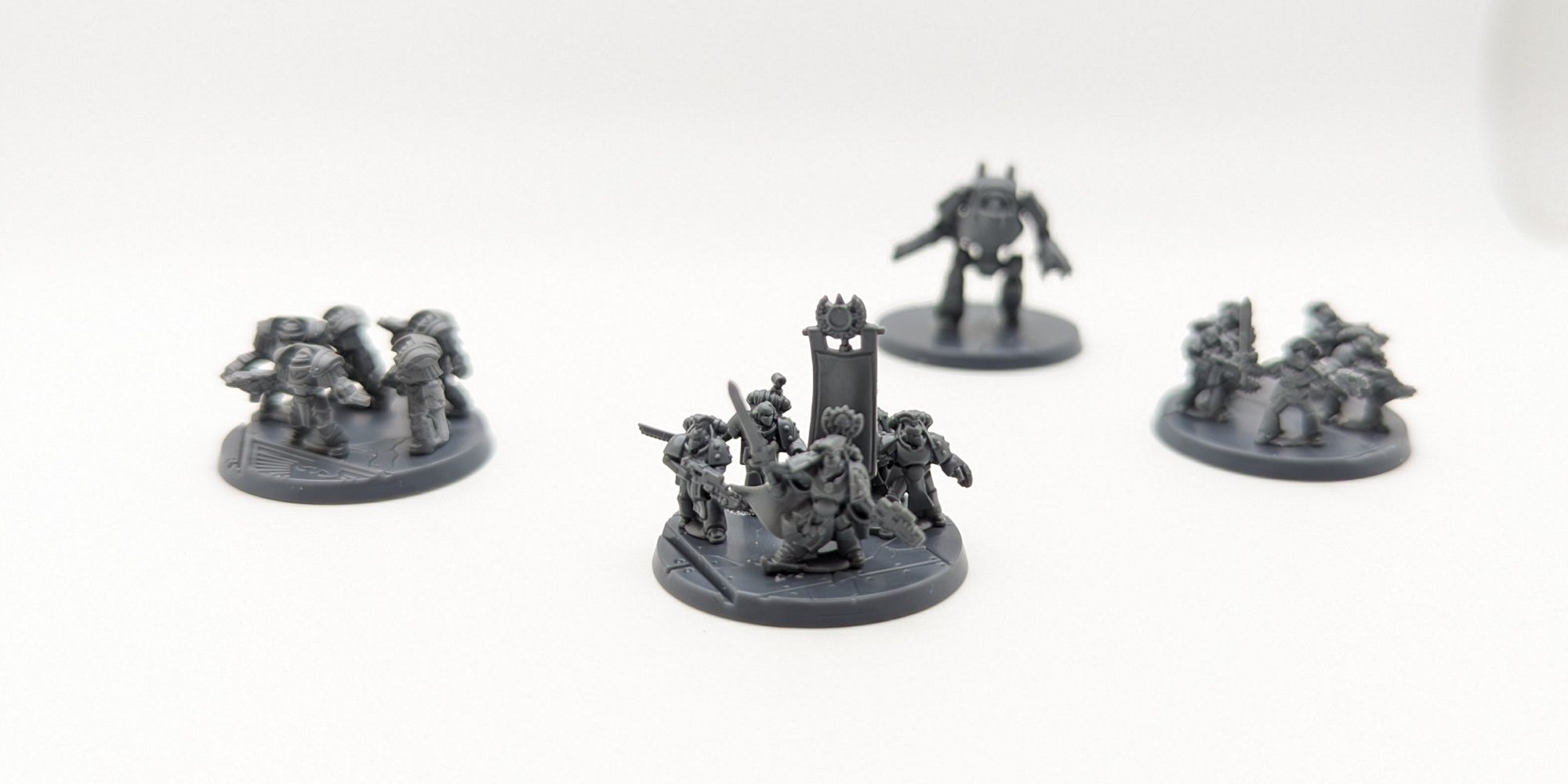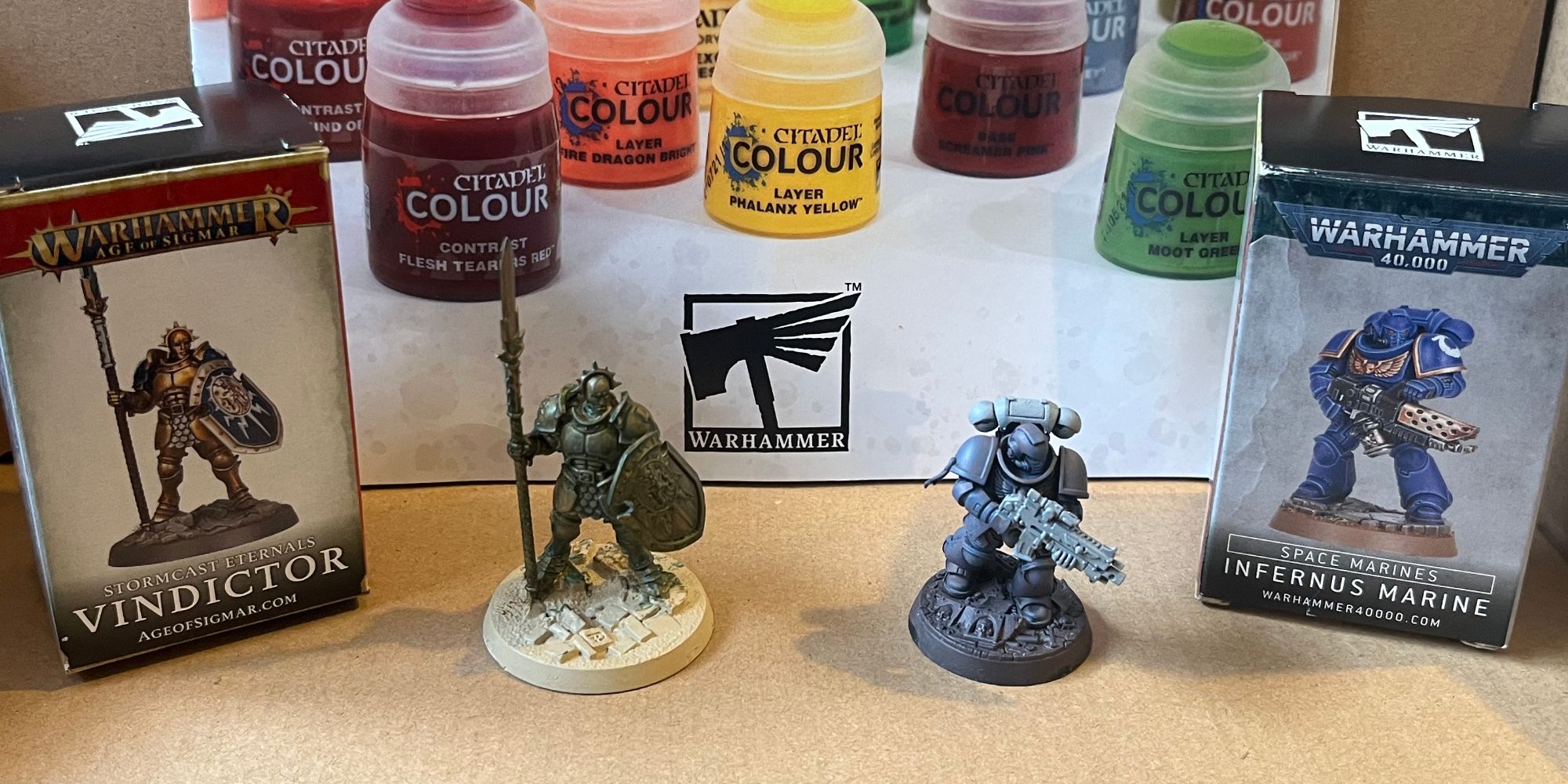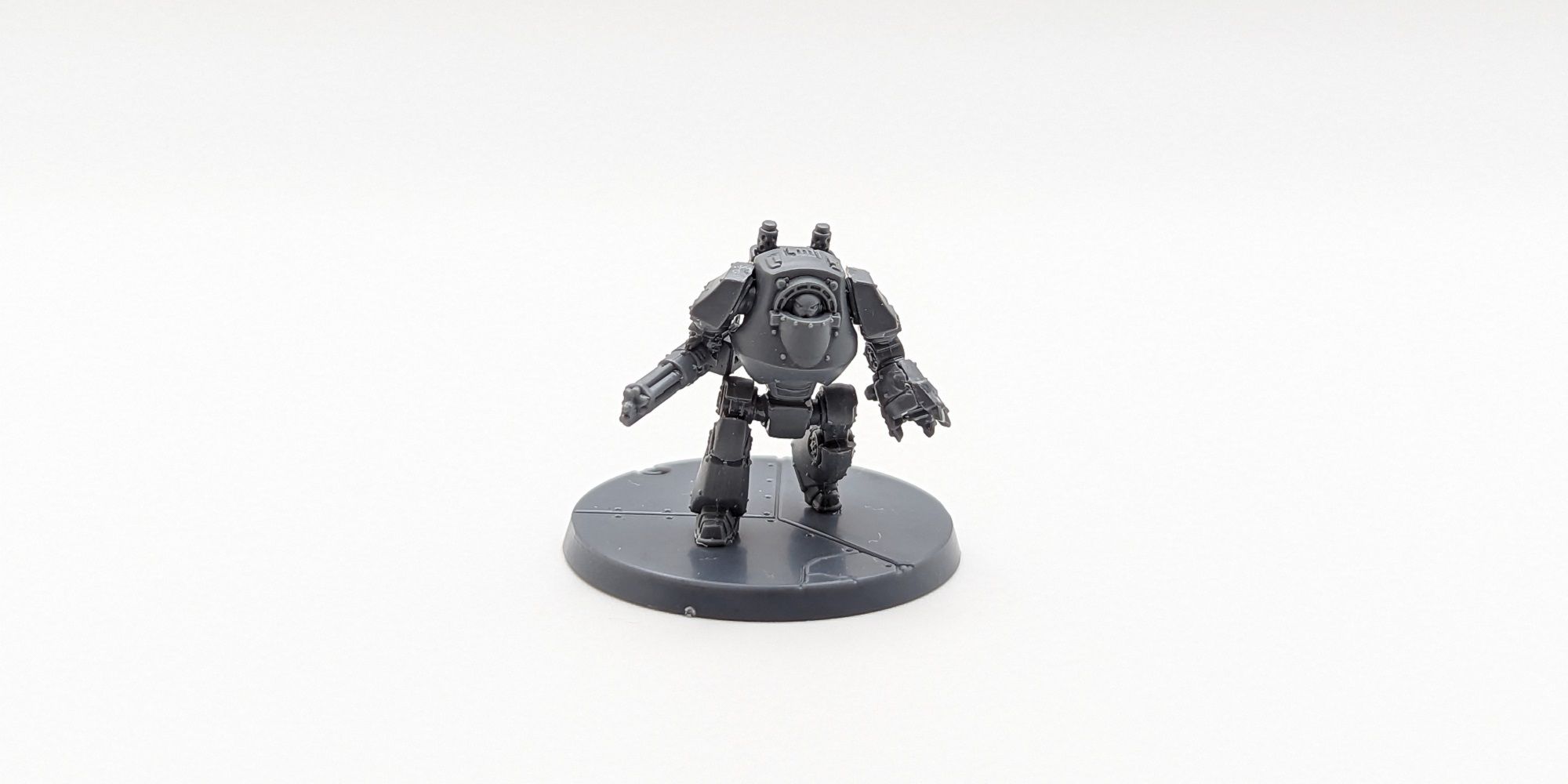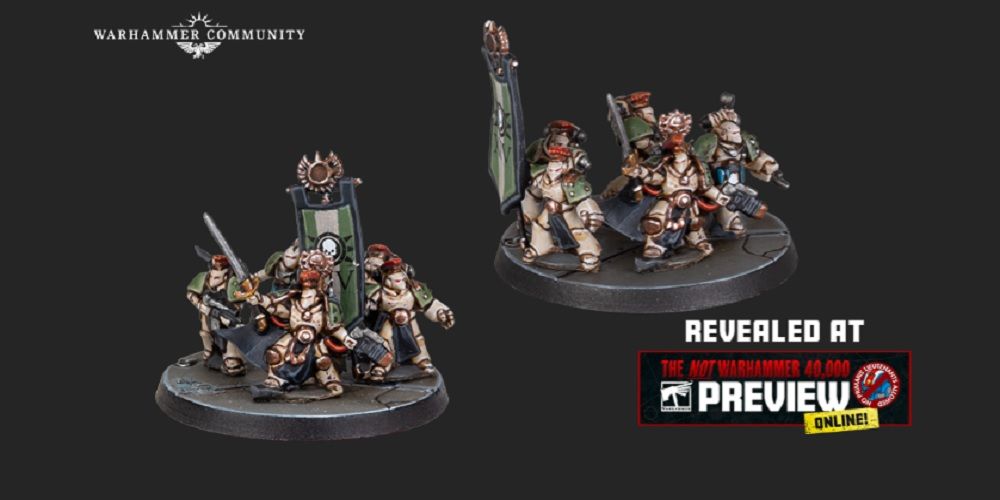I’m not going to hobby shame. If you like painting your T’au a bright pink, good for you. If your Tyranids all look like the Xenomorph, I see you. If you play a grey army of unpainted plastic, I might let out a sigh, but I appreciate not everyone has the time to painstakingly highlight a hundred plastic warriors.
The Warhammer community can get a little gatekeepy about painting. Some people think painting True Metallic Metals is cheating, or ‘slapchop’ and contrast are too easy and therefore considered shortcuts. I say you paint your miniatures in whatever way you see fit, and so long as you’re not daubing them in offensive insignia, I’ll support you in your creative endeavours.
Having said all that, I’ve never understood people who paint their miniatures on the sprue, the sheet of plastic that holds all the pieces in place in the box. The standard operating procedure for Warhammer models is buy them, build them, paint them, base them, battle them. But some people do this the wrong way round.
Tip: Many people paint their miniatures in sub-assemblies, which are partially-built and help to paint details in tricky areas. A friend of mine paints the engines on his Aeldari jetbikes before proceeding to glue the bonnets on top, which feels like a step too far.
Painting on the sprue lets you paint every piece of every part. All those armpits and neck joints that are impossible to reach on a built model are simple on the sprue. But then you have to snip the parts off, leaving unsightly grey patches that are unprimed and unpainted. I don’t know what on-the-sprue painters do in these situations – I assume they dip back into a wet palette for the perfect matching shade, but I’m not sure. This is especially problematic on Space Marine kits, where parts may be attached to the sprue at awkward angles that are incredibly visible on the finished product.
Legions Imperialis may have changed my mind, however, for a number of reasons. The first is the simplest: they’re so darn small. A Space Marine is just 8mm tall, and these old eyes are supposed to just paint that? Then you’re telling me I need to put five of these on a base and still paint the ones at the back? This is a nightmare.
It’s safe to say that I’ve never played an Epic-scale game before, but these miniatures really are true to their name. Contemptor Dreadnoughts are about half the size of a regular 40k Guardsman, and the mighty Warhound Titans aren’t even as big as a modern Dreadnought. The detail packed into these miniatures is impressive, but boy are they difficult to paint.
But it was one specific realisation that led me to think of painting Legions Imperialis on the sprue. I tried to paint the Astartes Banner Bearer, despite his monstrous flag being positioned behind another soldier on the 25mm base. I managed to get a base colour and wash down, but any attempts at a freehand design would prove impossible. So I figured I needed to paint the miniatures individually. Then I ran into another problem.
I paint regular Warhammer models by holding their base, or popping it into a painting handle. This ensures you don’t smudge any wet paint and your model looks pristine. The problem with Legions Imperialis is, as mentioned above, you have five models fighting for space per tiny base. How do you hold a model that’s under a centimetre tall and doesn’t have a base?
The second reason I started painting Legions Imperialis on the sprue was the quality of the sprues themselves. For the vast majority of footsoldiers, the only point they are attached to the sprue is by their feet. Each one has a small pile of dirt or rubble to glue them onto the base with, so the part clipped from the sprue will be completely hidden as soon as you glue it down. This is not the case for the vehicles, dreadnoughts, or titans in the box, but these are (obviously) bigger, so slightly easier to paint. The dreads and titans have their own bases to hold them by, too, which is an additional help.
Legions Imperialis has forced me to change how I paint, something no other kit has done in my decades of painting Games Workshop figures. I’ve enjoyed painting these miniature miniatures on the sprue, but I still don’t quite understand people who do it at 28mm scale. If I’ve got any other recommendation for painting Legions Imperialis, though, it’s to invest in a magnifying glass.
Warhammer Legions Imperialis is available to pre-order today, and releases December 2. Thanks to Games Workshop for sending us these miniatures.




